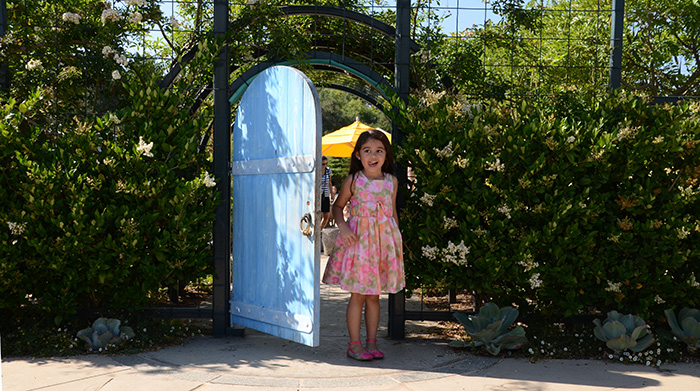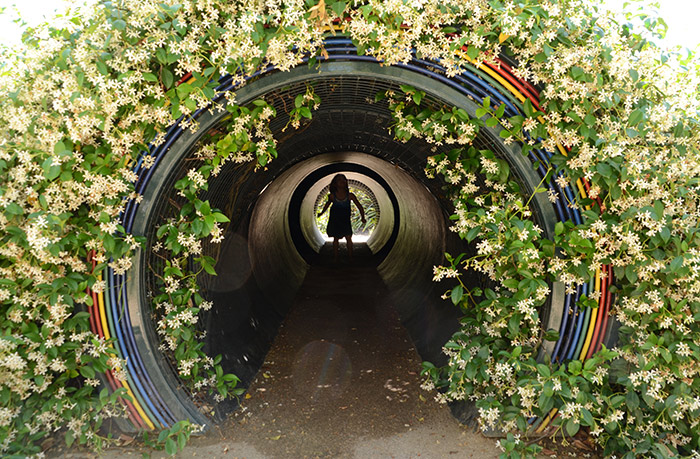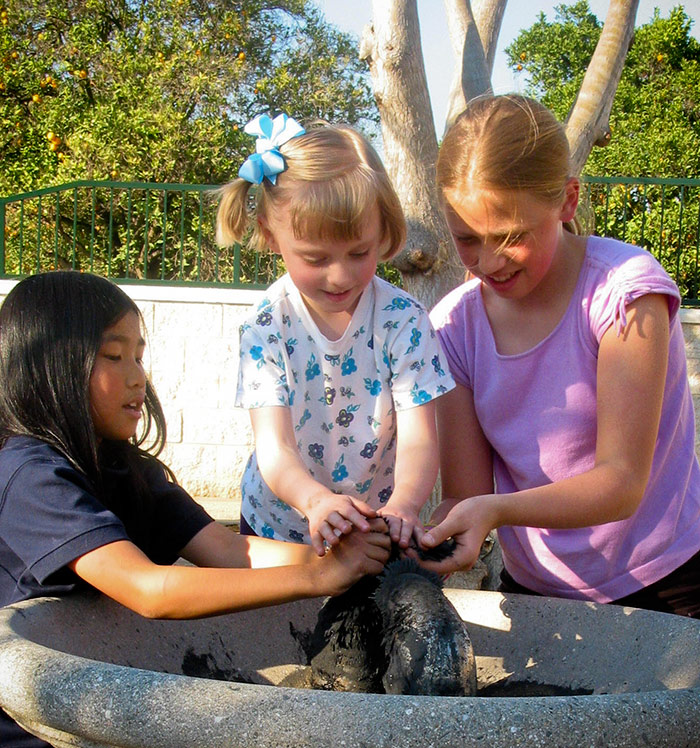The Huntington’s blog takes you behind the scenes for a scholarly view of the collections.
A Garden Where Children Grow
Posted on Fri., June 13, 2014 by

A child-sized door beckons kids at the front of the Children’s Garden.
Ten years ago, on Father's Day weekend in 2004, the Helen and Peter Bing Children's Garden made its debut. As we mark this milestone anniversary, a look back at how the garden came into being seems fitting. When we first decided to create a space where small children could explore the wonders of nature, Helen Bing immediately offered support and became actively engaged with the project. And Jim Folsom, the Telleen/Jorgensen Director of the Botanical Gardens, took the project quite personally. He did the only reasonable thing to be done in such a situation: He and his wife packed up their own kids and went on a road trip across America, on a recon mission to visit other children’s gardens.
With his young daughter and son serving as his test subjects, Jim paid close attention to what they liked and what they ignored in gardens designed for children. He took note of what captured their imaginations and what fell completely flat. Whatever happened on that road trip must surely have been magical, because Jim came back inspired. Working in collaboration with kinetic sculptor Ned Kahn and landscape architect Todd Bennitt, he created an interactive landscape that was both unique and sublime, like nothing heretofore in existence.

Inside the Prism Tunnel, children can see how sunlight breaks into colored arcs and soft halos.
The Children’s Garden opened to great acclaim and remains hugely popular, with a fan base that is literally growing every day. The garden has completely transformed The Huntington, and this anniversary has reminded me by how much. Several decades ago, children—while not actively discouraged—were not considered a primary audience. Those years of “children should be seen but not heard” are long gone, thankfully. It’s a pleasure to see so many moms and dads arriving every day with babies, toddlers, and young children all eager to explore. The degree to which our audience has become more and more diverse—and considerably younger—is incredibly satisfying.

Water is one of four elements of nature represented in the interactive features in the Children’s Garden, along with Fire, Earth, and Air. Children can use their hands to change the shapes of water bells, thereby altering the flow of the water.
The Children’s Garden serves as a source of joy and wonder. Kids get to splash in water, make music with pebbles, dance under rainbows, disappear into a swirl of fog, and hold the magic of magnetic forces in their hands. They might not realize it, but they're learning about the building blocks of life: Nothing grows without light, water, earth, and air. These are the elements that serve as the core features of the garden. For their part, parents get to witness important steps in early-childhood development, because with each new experience a child is exposed to, the neurons in his or her brain are further shaped and trained. Providing a hands-on, multi-sensory experience in an environment that invites youngsters to touch, smell, see, hear, the Children’s Garden is a feast for a child’s hungry intellect.

Like water play, magnetic sand provides another tactile experience for children who can get a hands-on feel for the interaction of force fields.
As a flagship endeavor, the Helen and Peter Bing Children’s Garden continues to expand its role, providing the core experiences in botanical education that will lead children, as they grow, on to new discoveries in our Associated Foundation Teaching Greenhouse and Rose Hills Foundation Conservatory for Botanical Science. These activities further cultivate the very children who began their exploration as toddlers.
As a whole these encounters invite both school and family audiences to learn about plants, the environment, and stewardship through science and gardening. Soon to come in our offerings for families, a kitchen garden (or potager) will be developed to the north of the Children’s Garden, completing the context that provides learning and engagement for children of all ages.
And you thought they were just having fun!
This post originally appeared in the May/June Calendar as the President's Message. Click here to learn more about the Children’s Garden.
Related video content:
“A Song of Pebble and Line,” a short piece featuring sights and sounds of the Children’s Garden
Steven S. Koblik is president of The Huntington.